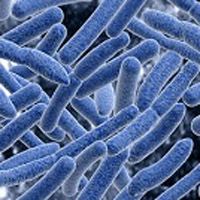Understanding the Microbiome and Its Impact on Human Health
Researchers are learning more about the ways in which gut microbiota interact with the central nervous system and the role this can play in pain management.

Instant polling at an educational session of the 2014 American Academy of Pain Management annual clinical meeting in Phoenix, AZ, revealed that only 40 percent of the approximately 350-person audience was “familiar” with the concept of a microbiome. So, what is the microbiome? The microbiome is all of the microbial genomes in or on the human body, differing slightly from microbiota, which refers to all microbial organisms in or on the human body.
As presented by Donald C. Manning, MD, PhD, Chief Medical Officer of Adynxx Inc., the microbiome, which includes genomes of bacteria, archaea, virus, and fungi, is so large in comparison to the human genome, that we are actually part of a “Superorganism.” Due to advances in molecular biology and gene sequencing technology, researchers have been able to analyze the “core microbiome” of 18 body areas of approximately 300 people. In total, the microbiome contains around 150 times as many genes as the human genome. And amazingly, 90 percent of the microorganisms that were sequenced have been unculturable to date. In other words, the microorganisms found in or on the human body and studied through traditional culturing represent only 10 percent of the entire microbiota.
According to Manning, an individual’s microbiome is a rich and diverse, mutualistic ecosystem that is constantly evolving and varies greatly across individuals, families, and geographic locations. The microbiome begins to develop at birth, and a vaginal delivery will seed the baby with a more appropriate microbiota than a C-section. In fact, during pregnancy, the vaginal flora progresses to contain more lactobacillus, which will aid the infant in digesting lactose inbreast milk. The microbiome of babies delivered through C-section represents microorganisms more predominant on skin.
An individual’s microbiome is also strongly influenced by diet and antibiotic use, especially in infancy. “Every dose of antibiotics is a role of the dice,” Manning stressed. “It can take a year to recover from one course.” However, antibiotics are also consumed inconspicuously in animal products, and this continuous, subtherapeutic exposure may be just as damaging.
Manning described many aspects of human health that are affected by the microbiota, including the development of the immune response, pathogen protection, metabolism extension, intestinal barrier function and motility modulation, and perhaps most striking, the development and modulation of social, emotional, and anxiety behaviors. In the case of pathogen protection, for example, it is now well established that transplanting microbes from the intestine of healthy individuals (fecal transplant) into patients suffering from life-threatening C. difficile infectionshas a success rate of over 95 percent.
Consequently, loss of gut microbiota diversity (dybiosis) is associated with a variety of disorders and conditions, including autoimmune diseases, behavioral disorders, and pain. The gut microbiota may also play a role in hyperalgesia; Manning noted commensal microbiota are essential for the development of inflammatory pain responses.
According to Manning, the effects of probiotics are highly strain-dependent; each strain of bacteria and combination of strains causes specific reactions in the human body. While most studies have been done in animals, a few high-quality human studies are enlightening: patients with chronic fatigue syndrome treated with the L. casei strain Shirota (LcS) showed a significant decrease in anxiety symptoms when compared to patients treated with a placebo (Messaoudi, 2011); healthy humans and rats had reduced anxiety and decreased serum cortisol when treated with a combination of L. helviticus and B. longum (Desbonnet, 2008 and Barrett 2012); and B. infantis, L. helviticus R0052, B. longum R0175 improved depression (Everard 2003).
Probiotic therapy may even have a role to play in pain management. Manning noted that L. acidophilus NCFM modulates intestinal pain and induces opioid and cannabinoid receptors, while L. reuteri and L. paracosci prevents or reverses antiobiotic-induced hyperalgesia. The probiotic L. plantarum inhibits inflammatory colonic distension pain.
At this point, there are still many more questions than answers regarding the human microbiome. However, Manning advocates a transition from “body-as-battlefield” to “human-as-habitat” approach to medicine. We’re still in the “early days of the microbiome,” Manning concluded, “I wanted to give you an idea of where it’s going and some of the fascination with it.” In the future, Manning described, key research must take place in humanized animal models, the normal microbiota must be further defined, and better human studies on the role and function of prebiotics and probiotics must be completed.